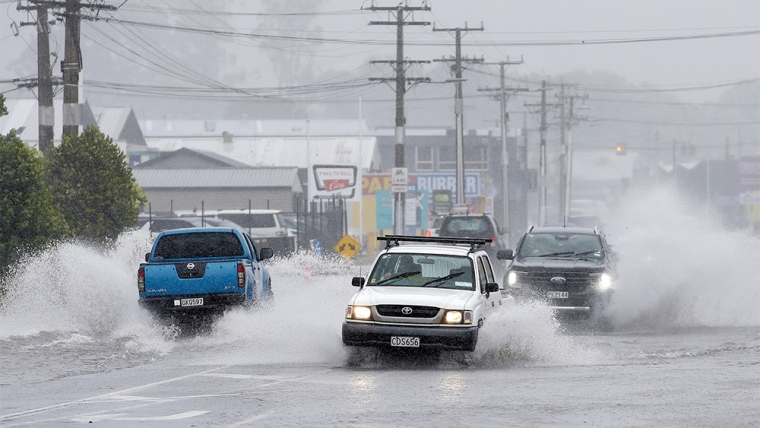
IAG New Zealand says it has received 600 insurance claims from the Dunedin floods so far.
The insurance giant is Australia as well as NZ’s largest insurer and includes the AMI, State and NZI brands here.
IAG Chief Executive Amanda Whiting says Dunedin observed its wettest day in over a century when it experienced significant flooding during two days of heavy rainfall in early October.
According to Whiting, IAG has received over 600 claims to date from the storm and the insurer’s response remains ongoing.
“We will be working hard to help our customers who have been affected by this event in the weeks and months ahead,” she says.
IAG released the Dunedin claim numbers alongside its latest findings from its biannual Wild Weather Tracker on Tuesday.
Data from the Dunedin flooding hasn’t been included in the latest tracker but will be included in the next one.
IAG's tracker reports on the weather-related claims the insurer has received every six months, with the latest tracker reporting on claims made from the beginning of March 2024 to the end of August 2024.
During this period, IAG says AMI, State and NZI recorded 19 natural hazard events which resulted in 5,419 claims.
Although the number of claims overall was fewer than in recent previous periods (IAG received 6,712 weather-related claims in its last Wild Weather tracker in May), IAG says the data reflects the “volatile nature” of NZ’s weather.
Storms made up 78% of natural hazard-related claims and the North Island accounted for 84% of storm claims.
Aucklanders lodged the most claims for natural hazard events (44%), followed by Waikato (10%), Canterbury (9%), Hawke’s Bay (7%) and the Bay of Plenty (5%).
The majority of natural hazard claims lodged were for home policies, followed by car and contents policies.
“New Zealand’s geology, rivers, oceans and subtropical-to-cooler climate all combine to make one of the world’s riskiest locations for natural hazards,” Whiting says.
“This is why, for over a decade, we have been clear that New Zealand needs to take urgent action to keep people safe from the impacts of natural hazards and climate change. We cannot control when the next disaster will strike, but we can move beyond seeing them as surprising or exceptional.”
Whiting says NZ’s approach to natural hazards favoured “response and recovery” over investing in risk reduction and resilience, and this approach isn’t keeping pace with the growing risk from extreme weather events.
“The result is watching some of our most exposed communities being repeatedly devastated by natural hazards. While these communities show great resilience, the emotional toll that these events take on New Zealanders is all too apparent,” she says.
Whiting says the recommendations from the Finance and Expenditure Committee (FEC) in its climate inquiry report, released in early October, need to be turned “into actions”.
Amongst a large number of recommendations in its report, the FEC recommends a future national climate adaptation framework needs to establish a “clear mandate” for local and central government when it comes to adaptation resourcing and financing arrangements.
A more proactive approach is needed and the committee believes the Government’s framework needs to establish a system where “all actors” are both incentivised and able to act on climate adaptation.
The cross-party committee was tasked by Climate Change Minister Simon Watts back in May to decide how the country mitigates the risks and costs of severe weather events as well as developing objectives and principles for a climate adaptation framework.
5 Comments
The Southland floods are nothing new, it's all been done before, several times.
Dunedin is in Otago, not Southland.
600 claims. Out of how many policy holders?
20 odd years ago I was in the process of getting a quote, still telephone those days, for house contents and was asked did I have security latches on the opening windows. I said no but if I had fitted would my premium drop. No.
Insurance companies will ask for increased security without a drop in premium.
Any flood resilience would have to be quite major for the premiums to drop. The insurance company may note all those properties in that area and increase the premiums. Not sure if they are that sophisticated.
"IAG Chief Executive Amanda Whiting says Dunedin observed its wettest day in over a century ". Why does Interest.co.nz not fact check this - is that not de rigueur these days? Clear conflict of interest for insurers (and councils) to big up very recent storms. More rain fell in 2015(!),1968,1929 etc. etc.
I wonder if councils blathered on about climate adaption networks in 1929 or just got on with it?

We welcome your comments below. If you are not already registered, please register to comment
Remember we welcome robust, respectful and insightful debate. We don't welcome abusive or defamatory comments and will de-register those repeatedly making such comments. Our current comment policy is here.